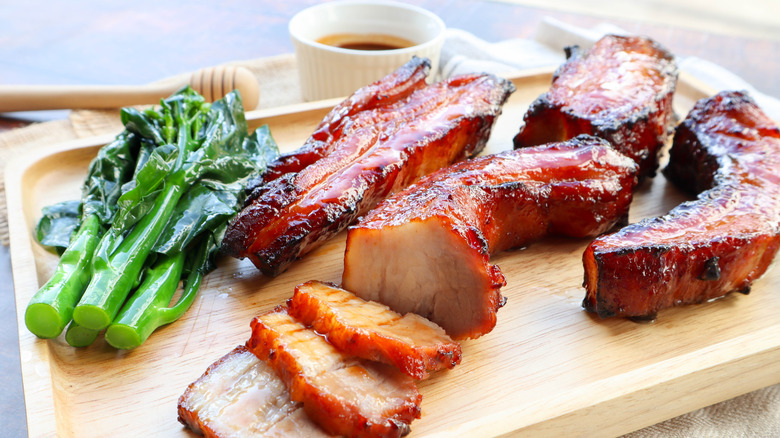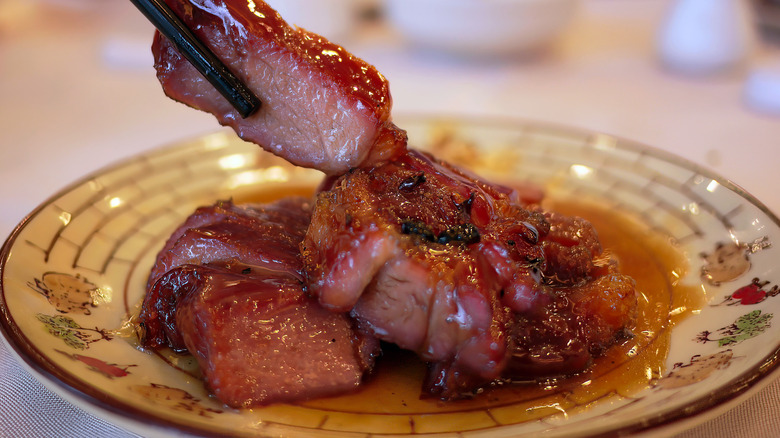The Key Ingredient That Gives Chinese Barbecue Its Sticky Glaze
If you're a habitué of Chinese restaurants, you definitely know char siu (sometimes spelled cha siu, char shao, or char siew). It's the famous Cantonese-style pork barbecue known for its deep red color and glistening glaze. Lots of yummy things go into char siu, including hoisin sauce, Chinese five spice, and soy sauce – and most home recipes you find (like our chicken variation) involve sweeteners like brown sugar or honey. While these are great for getting the glaze, they simply can't provide the high-gloss sheen of restaurant char siu (or Peking duck, for that matter), which looks positively lacquered. There's only one ingredient that can provide that kind of shine: maltose.
Maltose is a naturally occurring sugar made from two bound glucose molecules that plants use to break down stored energy. Maltose is less sweet (by about 30% to 60%) than conventional sugars like fructose or sucrose, though it does have a rather high glycemic index, at 105. Maltose's ability to form a glossy coating on meat is due partly to its tolerance for extreme temperatures. And it's for this reason that Chinese cooks have been using maltose to create banquet-worthy meats at least since the Shang Dynasty, roughly 3,500 years ago.
Maltose for the sticky win
You can get your hands on maltose syrup pretty easily, both online and in brick-and-mortar stores. It's incredibly thick – ten times thicker than normal syrups at room temperature! It's this extreme thickness that makes it so sticky. If you decide to use maltose in your next char siu (which you can do one-to-one with brown sugar or honey), we recommend heating up the jar in a water bath or microwave and covering your spoon with oil before using it. As we said, it is viscous and gets extremely hot — almost like cooking with hard candy — so use extreme caution when cooking with it, particularly when it bubbles.
Once you've freed the maltose syrup from its container, mix it in with the other marinade/glaze ingredients. In the middle of a searing hot grill or oven, it will happily set about its job of creating that exquisite glaze. If you're also thinking about making your own Beijing roast duck, mooncakes, or sticky rice, consider using maltose in those recipes too. After all, it's tradition.

